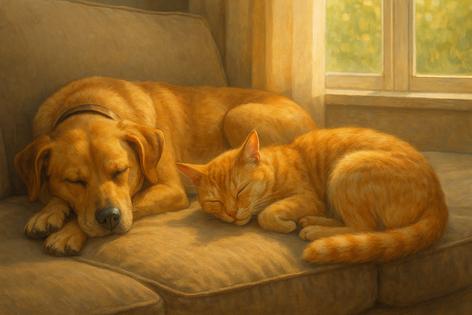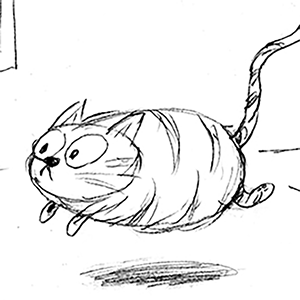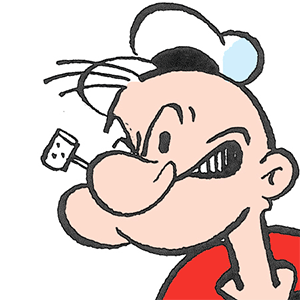When Pets Dream: What Sleep Behaviors Reveal About Cats and Dogs
Published in Cats & Dogs News
When you watch your cat’s paws twitch or hear your dog murmur softly in its sleep, you’re witnessing a small but profound mystery—evidence that the animals who share our homes may also share our capacity for dreaming. Those subtle twitches and sighs aren’t random; they’re part of a structured sleep pattern shaped by millions of years of evolution, one that offers insight into the secret inner lives of cats and dogs.
Inside the Sleeping Mind
Both species experience two distinct types of sleep: non-REM, when the body repairs itself and energy stores are replenished, and REM—rapid eye movement—when the brain lights up with activity even as the body lies still. It’s during REM that dreaming occurs. In this state, the brain is almost as active as it is when awake, yet most muscles are paralyzed, preventing animals from physically acting out what they dream.
Experiments over the decades have shown that when this paralysis is interrupted, cats will sometimes rise, stalk invisible prey, or pounce at shadows while still asleep. The conclusion seems inescapable: what they do in their dreams echoes what they do in their waking lives. A dog’s paw paddling in the air or a cat’s whiskers flicking rhythmically are signs that the mind is alive and replaying familiar patterns of motion and emotion.
What Dreams May Tell Us
If we could step inside a pet’s dream, what would we find? Evidence suggests that the content of those dreams reflects ordinary experience and deep instinct. Dogs probably relive moments from their daily routines—running through fields, following a scent, chasing a ball, or curling up next to a favorite person. Cats, hardwired as hunters, may dream of stalking prey, of the satisfying tension before a pounce, of movement and triumph.
Dreams may serve more than entertainment. They appear to help with memory consolidation, allowing an animal’s brain to process what it learned during the day. This means that when a puppy twitches and whines in sleep, its brain might be rehearsing new skills—commands, tricks, or the feel of running full tilt through the yard. The process could be vital for development, just as children’s sleep strengthens the neural connections formed by play and exploration.
The Influence of Age and Size
Age and size affect how animals dream. Puppies and kittens spend far more time in REM sleep than their adult counterparts. Their brains are still wiring themselves, so they dream frequently, with dramatic movements and tiny noises that look like play. Older pets may sleep more hours overall, but with shorter, lighter REM phases.
Size also matters. Smaller dog breeds tend to dream more often but for shorter durations, while larger dogs experience longer, deeper dream episodes separated by extended stretches of non-REM rest. Cats are famously adaptable sleepers, dozing as much as sixteen hours a day, but their REM cycles shorten with age, suggesting that the richness of their dream life may taper as they grow older.
The Clues in Behavior
If you’ve watched your pet sleep, you’ve probably seen the signs: a paw flexes, the tail flicks once or twice, ears twitch toward imagined sounds, or a faint bark or meow slips out. These gentle spasms are normal and healthy. They represent the interplay between the active brain and the paralyzed body. Most animals experience only mild movements, but occasional bursts of energy show the vividness of the dream.
Violent thrashing or prolonged vocalizations, however, are not normal. In rare cases, pets can develop a form of REM behavior disorder, a condition in which the normal paralysis fails and the animal begins acting out dreams in earnest—leaping, snapping, or running in place. Such episodes call for veterinary attention, since they can lead to injury and indicate underlying neurological changes.
Why Evolution Keeps Dreams Alive
Dreaming is costly—it requires energy, complex brain architecture, and specialized control systems—so its persistence across so many species suggests an evolutionary advantage. One theory holds that dreams allow the brain to integrate experience, refining responses to future challenges. In this view, a dream is a mental simulator that lets an animal practice survival behaviors without risk.
A hunting cat might sharpen its coordination in sleep. A dog, attuned to pack life, could be reinforcing patterns of social bonding and vigilance. Over millennia, those who dreamed effectively might have been better prepared for the real world upon waking. Even the emotional content of dreams—joy, fear, curiosity—could help calibrate the nervous system’s balance between caution and confidence.
Creating Restful Sleep
The quality of a pet’s sleep influences behavior, mood, and learning. Animals deprived of rest often become irritable or anxious, just as humans do. Establishing a predictable routine—feeding, exercise, and bedtime in regular cycles—encourages healthy sleep rhythms. A calm environment, free from loud noises or bright lights, helps the brain descend into deep rest.
Comfort also matters. Dogs tend to prefer cooler spots with supportive padding, while cats favor warmth and enclosed spaces that mimic the safety of a den. For senior pets, orthopedic beds or heated pads can relieve pressure and promote relaxation. Observing your animal’s preferred sleeping posture and temperature can guide small changes that make a big difference.
The Boundaries of Knowledge
No scientist can yet describe a dog’s dream in detail or translate a cat’s night vision into narrative. Our understanding comes from patterns of behavior and from brain activity that mirrors our own. We know they dream, but not what they dream of. Still, there’s a strange comfort in that uncertainty. The mystery connects us more deeply to the creatures who share our lives, reminding us that consciousness is not ours alone.
What is clear is that dreaming plays a role in mental and emotional balance. When your dog curls up at night or your cat stretches into a sunbeam for an afternoon nap, the worlds unfolding behind their eyelids are probably as rich, layered, and meaningful to them as our dreams are to us.
The Shared Sleep of Companions
The bond between humans and animals extends even into sleep. Studies show that dogs resting near their owners experience more stable heart rhythms and lower stress levels. Many cats choose to nap within sight or scent of their people, drawn by the reassurance of proximity. We, in turn, find peace in their presence—the steady breathing of a trusted companion can be one of the most calming sounds in a home.
In that sense, our dreams may overlap. We shape our pets’ worlds, and they shape ours. The love, play, and daily rituals we share become the raw material for their nocturnal adventures. Watching them dream reminds us that their minds, though different, are alive with memories and imagination.
========
This article was written, in part, utilizing AI tools.









Comments